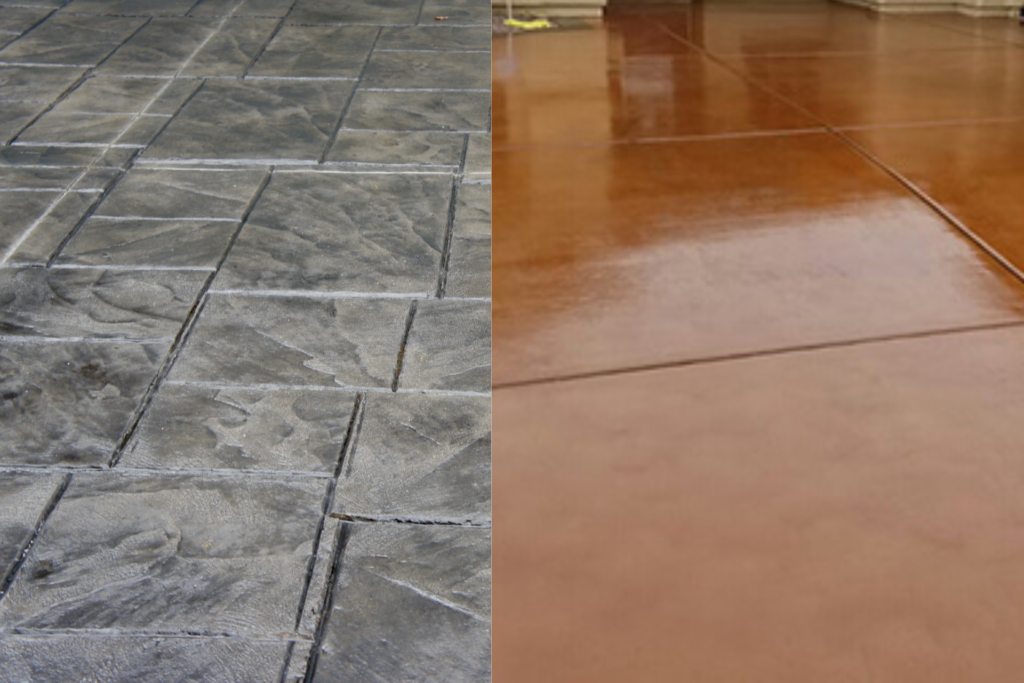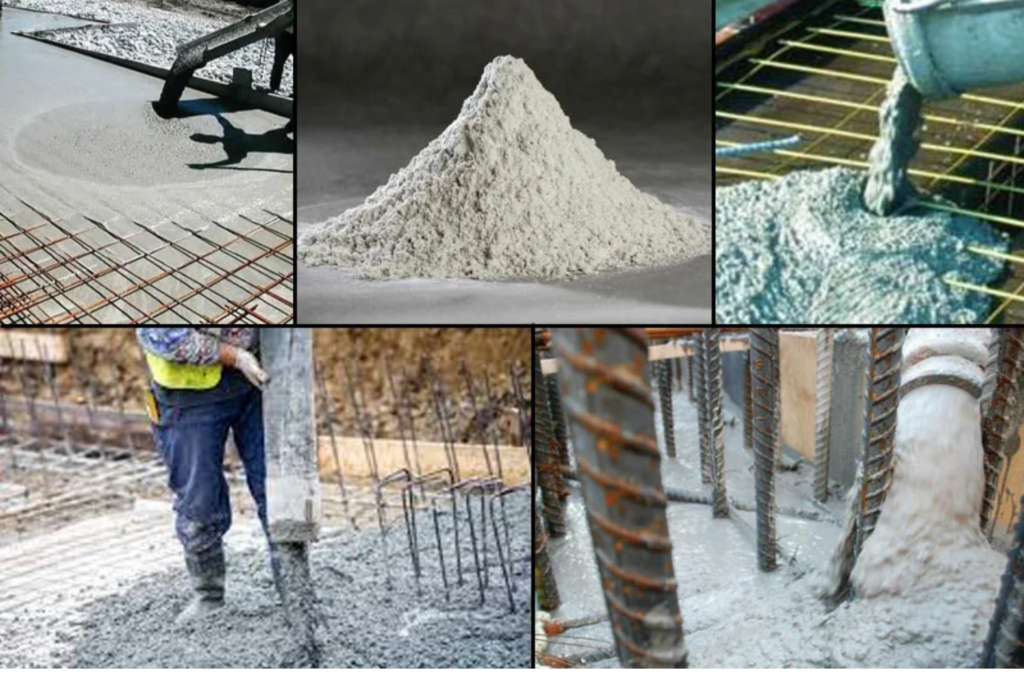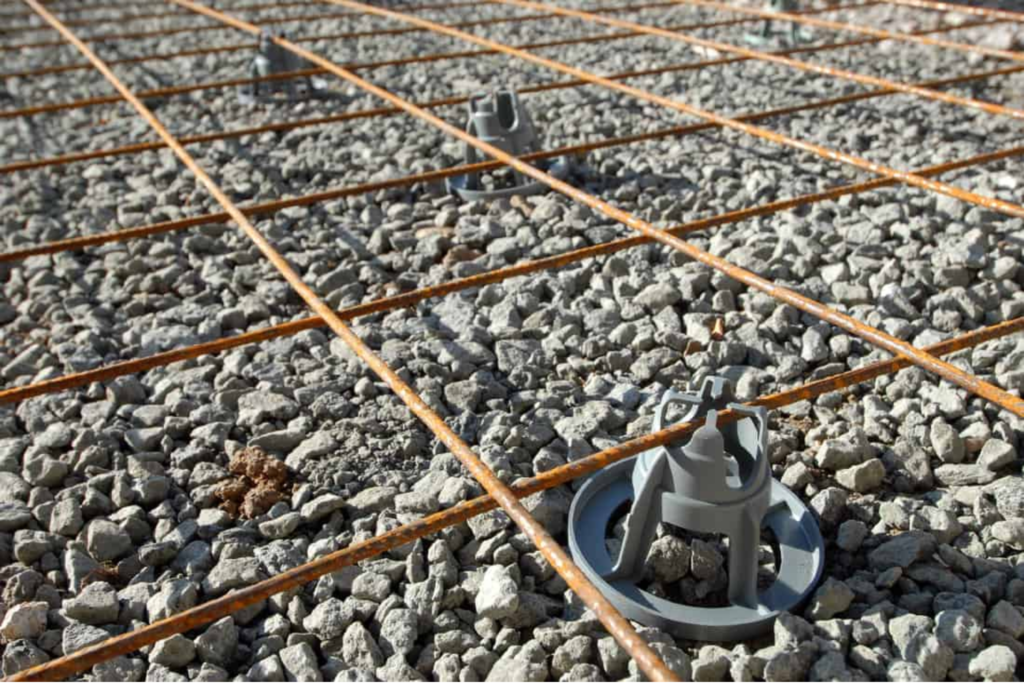Welcome to our comprehensive guide where we delve into a popular decision many New Zealand homeowners face: choosing between a concrete slab and a timber floor. As lifestyle preferences, climate conditions, and environmental considerations increasingly influence home renovation choices, understanding the nuances of these flooring options becomes crucial. This post aims to compare the pros and cons of concrete slabs and timber floors, explore their suitability for different architectural styles and lifestyles, and help you determine which flooring type best meets the needs of your home and family. Whether you’re building a new house or renovating an old one, the insights provided here will guide you through making an informed flooring choice.
When deciding between a concrete slab and a timber floor in New Zealand, homeowners should consider factors like durability, cost, comfort, and aesthetic appeal. Concrete slabs are known for their longevity and low maintenance but can feel cold and hard underfoot. Timber floors offer a warm, classic look and can add value to a home, though they require more upkeep and are sensitive to moisture. Each flooring type has its own set of advantages that cater to different lifestyles and housing needs. Choose based on your specific requirements, climate, and budget to enhance your living space effectively.
Table of Contents
Understanding The Basics Of Flooring: Concrete Slabs Vs. Timber Floors
Choosing the right flooring for your home is crucial not only for aesthetics but also for long-term durability and maintenance. In New Zealand, two popular choices are concrete slabs and timber floors, each offering distinct advantages and unique installation processes. This section delves into what each flooring type entails, providing homeowners with essential knowledge to make an informed decision.
What is a Concrete Slab?
A concrete slab is a common structural element of modern buildings, consisting of a flat, horizontal concrete surface typically used as a floor or a roof. In residential settings, concrete slabs are praised for their strength and longevity, making them a preferred choice for foundations and ground floors, especially in areas susceptible to earth movement or where durability is a high priority.
Common Uses in Residential Settings
Concrete slabs are extensively used in constructing residential homes as they provide a sturdy base that is capable of withstanding considerable weight and conditions. They are ideal for garage floors, basements, and ground-level floors where robustness and moisture resistance are required.
Installation Process
The process of installing a concrete slab involves several key steps.
1. Site Preparation: The site must be cleared and leveled, which includes removing any vegetation and debris. A subbase of gravel is then laid down to enhance drainage and provide a stable base.
2. Formwork and Reinforcement: Wooden forms are constructed to hold the concrete in place, and steel reinforcing bars (rebar) are laid to strengthen the concrete.
3. Pouring Concrete: Concrete is mixed and poured into the form, ensuring it is spread evenly and fills all corners.
4. Curing: Once poured, the concrete needs to cure for several days, a process that involves keeping the surface moist to prevent cracks and increase strength.
What is a Timber Floor?
Timber floors are crafted from wood that has been cut into planks and processed for use as flooring. This type of flooring is favored for its natural appearance, warmth underfoot, and the character it brings to a home. In New Zealand, both native hardwoods like Rimu and Kauri, and imported timbers such as Oak and Maple, are popular choices, each offering unique shades and textures that cater to diverse aesthetic preferences.
Types of Timber Floors
- Solid Hardwood: Made from single pieces of wood, these floors can be sanded and refinished multiple times.
- Engineered Wood: Composed of multiple layers of wood veneers, engineered wood is more resistant to changes in temperature and humidity.
- Laminate: Although not true timber, laminate flooring offers a timber-look alternative that is cost-effective and durable.
General Installation Process
Installing timber floors generally involves the following steps:
1. Acclimatization: Wood planks are allowed to acclimatize to the indoor environment to prevent expansion or contraction post-installation.
2. Subfloor Preparation: The subfloor must be level and clean. Any irregularities can affect the final look and feel of the timber flooring.
3. Laying: The timber planks are laid down starting from one side of the room, ensuring they fit snugly against each other.
4. Finishing: Once laid, the floor may be sanded, stained, and sealed to protect the wood and bring out its natural beauty.
Both concrete slabs and timber floors have their distinct advantages and installation processes, each suitable for different environments and tastes. Understanding these basics is crucial in guiding homeowners to choose the best option that aligns with their lifestyle, budget, and aesthetic desires.

Factors To Consider When Choosing Flooring
When choosing the right flooring for your home in New Zealand, several key factors need to be taken into account. From durability to design flexibility, each aspect will play a crucial role in deciding whether a concrete slab or a timber floor suits your living space better. Let’s dive into the details.
Durability and Maintenance
Durability and ease of maintenance are paramount when choosing flooring that can stand the test of time. Concrete floors are renowned for their strength and longevity. They resist wear and tear well, making them ideal for high-traffic areas and commercial spaces. However, they can be prone to cracking if the foundation is not properly prepared or if there’s seismic activity, which is not uncommon in New Zealand.
Timber floors, while offering a warmth and classic charm, do require more maintenance to keep them looking their best. They can be susceptible to scratches, dents, and moisture, which can cause warping over time. Regular refinishing and careful placement away from high-moisture areas are recommended to extend their life.
The climate in New Zealand can also impact the choice of flooring. In regions with higher humidity, timber may require more maintenance due to its tendency to expand and contract, whereas concrete can offer more stability and less upkeep in such environments.
Cost Analysis
Cost is often a decisive factor in choosing flooring. Initially, concrete slabs generally have a lower cost compared to timber, primarily due to the materials and installation processes involved. Concrete is also less costly over the long term, requiring less maintenance compared to timber floors, which may need periodic sanding and refinishing.
However, it’s important to consider the long-term financial implications of each option. Timber floors, if maintained properly, can significantly increase a home’s resale value due to their aesthetic appeal and timeless quality. In contrast, while concrete is durable, its appeal can depend on trends and personal preferences.
Comfort and Insulation
Comfort and insulation are critical, especially in New Zealand’s varied climate. Concrete floors offer excellent thermal mass, absorbing heat during the day and releasing it slowly, which can be beneficial in homes exposed to ample sunlight. However, without in-floor heating systems, concrete can feel cold underfoot, especially in winter.
Timber floors are naturally warmer and provide better insulation against cold, making them a popular choice in cooler regions. They also tend to be softer underfoot, which can be a significant advantage for homes with young children or elderly residents.
Sound insulation is another factor to consider. Timber floors can produce more noise, especially in multi-storey homes, unless additional sound-proofing measures are taken. Concrete, being denser, naturally provides better sound dampening.
Aesthetic and Design Flexibility
The visual appeal of flooring should harmonize with the architectural style of your home. Timber offers a timeless elegance that can enhance the warmth and character of any space, from modern to traditional. It also comes in various finishes, species, and colors, allowing for a high degree of customization.
Concrete floors, on the other hand, offer a modern, minimalist look that works well with contemporary or industrial designs. They can also be stained, polished, or textured to achieve a unique finish that complements a wide range of décor styles.
Environmental Impact
The ecological footprint of your flooring choice is increasingly important. Timber floors, when sourced from sustainably managed forests, are renewable and can be recycled or repurposed at the end of their life. However, the chemicals used in treatments and finishes can impact indoor air quality if not chosen carefully.
Concrete, while energy-intensive to produce, can last many decades and is fully recyclable at the end of its lifecycle. The use of supplementary cementitious materials like fly ash can also reduce the environmental impact of concrete production.
In New Zealand, where environmental consciousness is significant, choosing flooring that aligns with sustainable building practices is vital. Both timber and concrete offer options that can minimize your home’s environmental impact, but the best choice will depend on your specific circumstances and values.
By considering these factors, New Zealand homeowners can make a well-informed decision that balances aesthetics, functionality, and sustainability. Whether you lean towards the rustic charm of timber or the sleek, durable appeal of concrete, your flooring choice will significantly influence the look and feel of your home.

Advantages And Disadvantages Of Concrete Slabs And Timber Floors
When choosing the right flooring for your home in New Zealand, it’s essential to weigh the pros and cons of popular options like concrete slabs and timber floors. Both materials offer distinct advantages and drawbacks that can significantly impact your living experience and property value. Let’s delve into the specifics to help you make an informed decision.
Pros of Concrete Slabs
- Durability: Concrete is renowned for its strength and longevity. A concrete slab floor can withstand years of wear and tear, making it an ideal choice for high-traffic areas. Its robust nature means it’s less likely to suffer damage from heavy furniture or active use, which is a significant advantage for busy households.
- Cost-Effectiveness Over the Long Term: Initially, installing a concrete slab might seem like a hefty investment, but it’s cost-effective over time. Due to its durability, the need for repairs or replacements is greatly minimized, saving homeowners money in the long run.
- Minimal Maintenance: Concrete floors are incredibly low-maintenance compared to other flooring types. They require just basic cleaning, and unlike wood, they don’t need refinishing or polishing to maintain their appearance and durability. This makes them particularly appealing for those who prefer not to spend extra time or money on upkeep.
Cons of Concrete Slabs
- Hardness: The solid nature of concrete, while excellent for durability, can be a disadvantage if comfort is a priority. Concrete is hard underfoot, which can be uncomfortable when standing for long periods.
- Coldness: Concrete does not retain heat well, making it cold to the touch, particularly in winter. This can be a drawback in cooler climates like New Zealand, requiring additional heating to keep the home warm.
- Less Forgiving on Falls or Dropped Items: The hardness of concrete also means that it’s less forgiving when it comes to falls or dropped items. Items are more likely to break when dropped on concrete, and falls can result in more severe injuries.
Pros of Timber Floors
- Warmth: Timber floors naturally provide a warmer underfoot experience, which is highly valued in colder climates. Wood’s natural insulation properties also contribute to a warmer, more inviting home environment.
- Aesthetic Appeal: Wood floors offer a timeless beauty that many homeowners love. They come in various grains, colors, and styles, easily adapting to any decor. This versatility makes timber floors a popular choice for those looking to enhance the aesthetic appeal of their homes.
- Potential Increase in Home Value: Timber floors are a sought-after feature in real estate markets. They can significantly increase the value of your property, making them a worthwhile investment for homeowners planning to sell in the future.
Cons of Timber Floors
- Susceptibility to Scratches and Moisture: Timber floors, while beautiful, are susceptible to scratches from pets, furniture, and foot traffic. They are also vulnerable to moisture damage, which can cause warping and other issues if not properly managed.
- Maintenance Requirements: Timber requires more maintenance than concrete. It needs to be sealed and polished regularly to maintain its look and durability. Additionally, it may require refinishing every few years to remove scratches and revitalize its surface.
By understanding these pros and cons, New Zealand homeowners can better assess which flooring option—concrete slab or timber—aligns best with their lifestyle, budget, and aesthetic preferences. Whether you prioritize durability and low maintenance or warmth and style, your flooring choice will have a lasting impact on your home’s comfort and value.

Case Studies And Real-Life Applications
When considering a significant home improvement such as choosing between a concrete slab and timber flooring, real-life experiences can be incredibly insightful. In this section, we delve into the personal stories of New Zealand homeowners who have made these choices, examining their reasons, experiences, and overall satisfaction. This hands-on perspective can be a valuable guide for others contemplating similar decisions.
The Johnson Family and Their Concrete Slab Flooring
When the Johnsons decided to build their new home in Christchurch, they chose a concrete slab floor primarily for its durability and low maintenance. Living in an area with moderate earthquakes, they wanted a foundation that was not only sturdy but could also withstand natural stresses. The process involved pouring concrete into a meticulously prepared site, ensuring a level and robust base for their home.
Feedback from the Johnsons
The Johnson family reports that the thermal mass of the concrete keeps their home cooler in the summer and retains warmth in the winter, significantly reducing their heating bills. They also enjoy the ease of cleaning—spills and stains can be quickly wiped away. One drawback they noted was the hardness of the surface, which took some getting used to, particularly in areas where the children play. However, they mitigated this by adding area rugs which also enhanced the aesthetic appeal of their interiors.
The Smiths and Their Choice of Timber Flooring
The Smiths, residing in a quaint Auckland suburb, opted for timber flooring to give their 1920s bungalow a warmer, more inviting feel. They chose a beautiful native Kauri pine, known for its rich color and durability. The installation process was quick and efficient, instantly transforming the look and feel of their home.
Feedback from the Smiths
The Smiths love the classic charm and warmth their timber floor adds to their bungalow. The natural material makes the space feel cozy and welcoming, a crucial factor during the colder months. On the downside, they have noticed that the floors are prone to scratches, particularly in high-traffic areas and from their pet’s nails. Regular maintenance, including occasional refinishing, is something they’ve come to accept as part of preserving the beauty of their floors.
General Insights
Both the Johnson and Smith families reported high levels of satisfaction with their choices, each highlighting that the benefits of their respective flooring types align well with their lifestyles and aesthetic preferences. These stories underline the importance of considering personal circumstances and the specific characteristics of each flooring option.
Through these case studies, potential homeowners can gain a deeper understanding of how different flooring types can impact everyday living. Whether prioritizing durability and ease of maintenance with concrete or the warm, inviting aesthetic of timber, the choice greatly influences the comfort and functionality of a home. These real-life applications serve as practical examples, helping others make well-informed decisions tailored to their unique needs and preferences in New Zealand’s diverse climates and lifestyles.

Making The Right Flooring Decision For Your New Zealand Home
Deciding on the right flooring for your home in New Zealand is more than just picking a material you like; it involves considering various factors that will affect your lifestyle, budget, and satisfaction with your living environment. This decision can significantly impact your home’s comfort, maintenance needs, and overall aesthetic. Here’s how to choose wisely between concrete slab and timber flooring, ensuring that the choice fits your specific needs.
Consider Your Lifestyle and Family Needs
The first step in choosing the right flooring is to consider your lifestyle and the needs of your family. For households with young children or pets, durability and ease of maintenance are crucial. Concrete slabs are highly durable and resist most wear and tear, making them ideal for families that expect a lot of foot traffic. They are also easier to clean and maintain, which is perfect for busy households.
On the other hand, if comfort and warmth are your priorities, timber floors may be the better option. They are softer underfoot and can provide a warmer surface during the colder months, which is a significant advantage in many cooler regions of New Zealand. Timber also adds a natural, warm aesthetic that can make a house feel more like a home, offering a range of colors and textures that complement any decor style.
Assess Your Location
The climate and location of your home should also influence your flooring decision. In areas with high humidity or frequent rain, such as the North Island coastal regions, timber floors might require more maintenance due to moisture, which can cause warping or swelling. In contrast, concrete slabs can handle moisture better, making them a practical choice in these environments.
Furthermore, if you live in an urban area and noise is a concern, timber flooring can be better at sound insulation compared to concrete. This makes it a popular choice for apartments or townhouses in city settings.
Set a Realistic Budget
Budget is another critical factor. While timber floors can be initially more expensive than concrete, they can also add significant value to your home, an important consideration if you plan to sell in the future. Concrete floors might have a lower initial cost, but depending on the finish and treatments you choose, the price can increase. Consider not only the installation costs but also long-term maintenance expenses when budgeting for your flooring.
The Importance of Professional Advice
Once you’ve considered all these factors, it’s advisable to consult with a flooring professional before making your final decision. Flooring experts can offer insights into the advantages and disadvantages of each flooring type in more detail, tailored to your specific situation. They can assess your home’s structure, local climate conditions, and your aesthetic preferences to recommend the best flooring option. Professional installers can also spot potential issues that you might overlook, such as subfloor preparation and moisture barriers.
A professional consultation ensures that you invest wisely, enhancing your home’s functionality and style without unforeseen complications. Remember, the right flooring can transform your living space, not just visually but also in terms of comfort and practicality, making this decision one of the pillars of home design.
By thoughtfully considering each of these aspects and seeking expert advice, you can confidently choose the flooring that will best meet your needs, last for years, and continually bring satisfaction and comfort to your daily life.

FAQs: About Concrete Slab Vs Timber Floor NZ
What are the main differences between concrete slab and timber floors?
Concrete slabs are a solid, durable option that provides a sturdy foundation with minimal maintenance. They are often cheaper in the long run due to their durability. Timber floors, on the other hand, offer a classic aesthetic and warmth that can enhance the home’s value and feel but require more maintenance and can be sensitive to moisture and scratches.
How does the installation process differ between concrete slabs and timber floors?
The installation of a concrete slab involves preparing the site, setting forms, placing reinforcement, and pouring concrete, which then needs to cure for several weeks. Timber flooring installation is typically quicker, involving laying down the wooden planks and securing them in place, often over an existing subfloor.
Which flooring type is more durable?
Concrete slabs generally offer greater durability and can handle heavy loads and traffic without significant wear. Timber floors, while durable, are prone to scratching and can suffer damage from moisture and heavy furniture.
Are there cost-effective timber floor options that are comparable to concrete in terms of price?
While timber floors generally cost more initially than concrete slabs, there are cost-effective options such as engineered wood or bamboo that offer durability and aesthetic appeal at a lower price point compared to traditional hardwood.
Can either floor type improve home insulation?
Timber floors are naturally insulating, which can help keep the home warmer in the winter and cooler in the summer. Concrete slabs can also be effective at insulating, especially if they are treated with radiant heating systems, but they typically retain cold and may require additional heating solutions.
What are the environmental impacts of choosing concrete or timber flooring?
The environmental impact of concrete includes high carbon emissions during production, though it is durable and long-lasting. Timber floors come from a renewable resource and can be more eco-friendly, particularly if sourced from sustainably managed forests and finished with low-VOC sealants.
How does the choice of flooring affect a home’s resale value in New Zealand?
Timber floors often increase a home’s resale value due to their desirability and aesthetic appeal. Concrete floors are valued for their durability and low maintenance, appealing to buyers looking for modern and industrial-style homes.
What are the maintenance requirements for each type of floor?
Timber floors require regular sweeping or vacuuming to remove dirt and grit, occasional mopping, and refinishing every few years to address any scratches or wear. Concrete floors are easier to maintain, needing only occasional sealing and regular cleaning with mild soap.
Are there any health considerations to keep in mind when choosing flooring?
Timber floors are a good choice for indoor air quality as they don’t harbor dust mites or allergens and can be cleaned easily. Concrete can also be hypoallergenic, particularly if properly sealed to prevent dust and mold accumulation.
How should homeowners choose between concrete slab and timber floor?
Homeowners should consider their budget, the climate in their area, the style of their home, and their family’s lifestyle and health needs. Consulting with a flooring professional can also provide personalized advice and help make the decision that best suits their specific circumstances.
Conclusion
In this comprehensive comparison between concrete slabs and timber floors, we’ve explored a range of factors that influence the choice of flooring in New Zealand homes. From durability and maintenance to cost and aesthetic appeal, both flooring types offer unique advantages and challenges. Concrete slabs stand out for their robustness and low upkeep, making them a practical choice for many. On the other hand, timber floors bring a warmth and elegance that can enhance the natural beauty of your space and potentially increase your home’s value. As you consider the best option for your home, it’s crucial to reflect on your specific living situation, budget, and style preferences. Assessing these elements will help ensure that your final decision not only enhances the functionality of your home but also aligns with your personal taste and lifestyle needs. Engage with professionals and gather as much information as possible to make a well-informed decision that you will be happy with for years to come.
About the Author:
Mike Veail is a recognized digital marketing expert with over 6 years of experience in helping tradespeople and small businesses thrive online. A former quantity surveyor, Mike combines deep industry knowledge with hands-on expertise in SEO and Google Ads. His marketing strategies are tailored to the specific needs of the trades sector, helping businesses increase visibility and generate more leads through proven, ethical methods.
Mike has successfully partnered with numerous companies, establishing a track record of delivering measurable results. His work has been featured across various platforms that showcase his expertise in lead generation and online marketing for the trades sector.
Learn more about Mike's experience and services at https://theleadguy.online or follow him on social media:





















